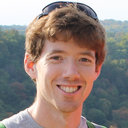A prospective epidemiological study of acute mountain sickness in Nepalese pilgrims ascending to high altitude (4380 m).
Parole chiave
Astratto
BACKGROUND
Each year, thousands of pilgrims travel to the Janai Purnima festival in Gosainkunda, Nepal (4380 m), ascending rapidly and often without the aid of pharmaceutical prophylaxis.
METHODS
During the 2012 Janai Purnima festival, 538 subjects were recruited in Dhunche (1950 m) before ascending to Gosainkunda. Through interviews, subjects provided demographic information, ratings of AMS symptoms (Lake Louise Scores; LLS), ascent profiles, and strategies for prophylaxis.
RESULTS
In the 491 subjects (91% follow-up rate) who were assessed upon arrival at Gosainkunda, the incidence of AMS was 34.0%. AMS was more common in females than in males (RR = 1.57; 95% CI = 1.23, 2.00), and the AMS incidence was greater in subjects >35 years compared to subjects ≤35 years (RR = 1.63; 95% CI = 1.36, 1.95). There was a greater incidence of AMS in subjects who chose to use garlic as a prophylactic compared to those who did not (RR = 1.69; 95% CI = 1.26, 2.28). Although the LLS of brothers had a moderate correlation (intraclass correlation = 0.40, p = 0.023), sibling AMS status was a weak predictor of AMS.
CONCLUSIONS
The incidence of AMS upon reaching 4380 m was 34% in a large population of Nepalese pilgrims. Sex, age, and ascent rate were significant factors in the development of AMS, and traditional Nepalese remedies were ineffective in the prevention of AMS.


